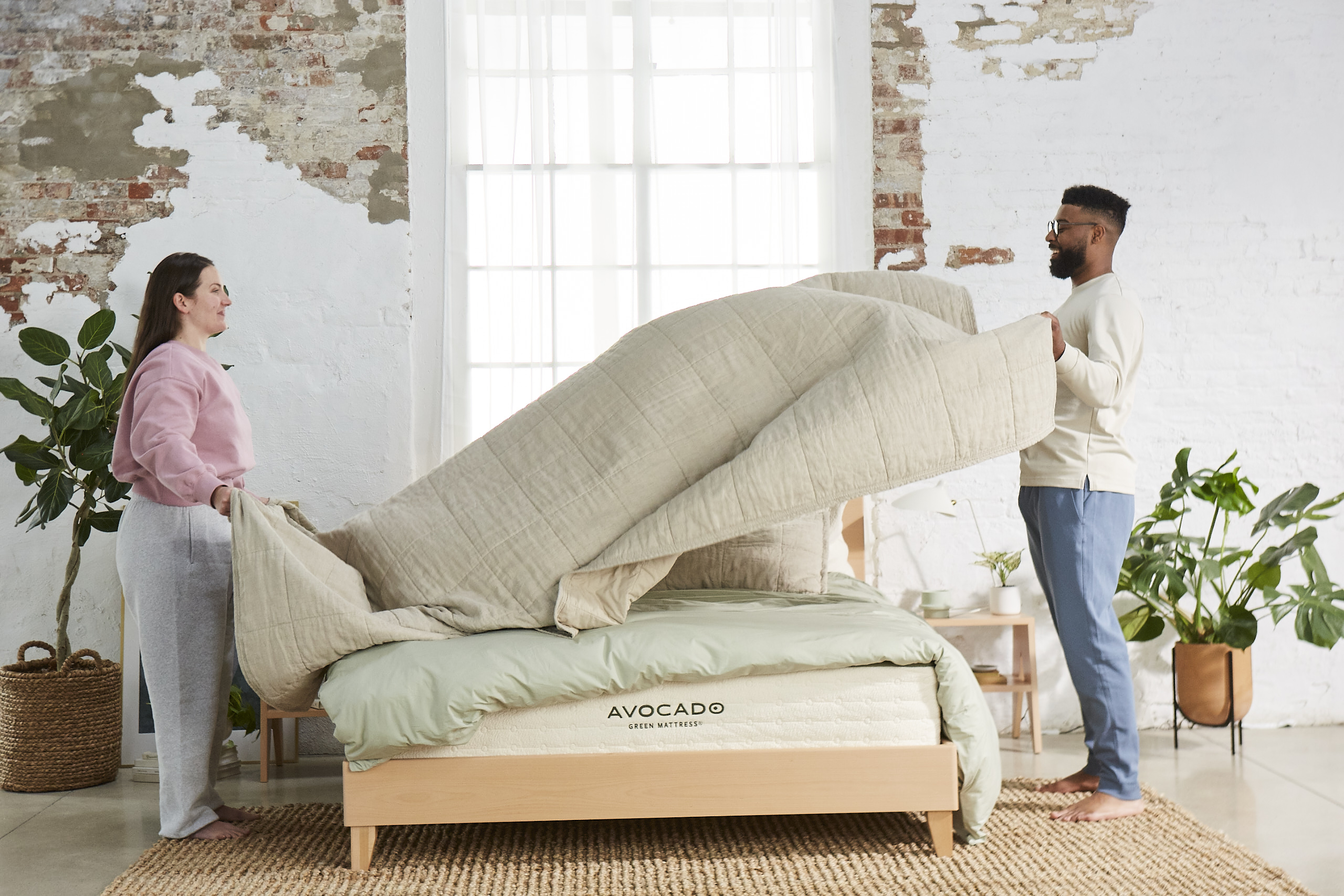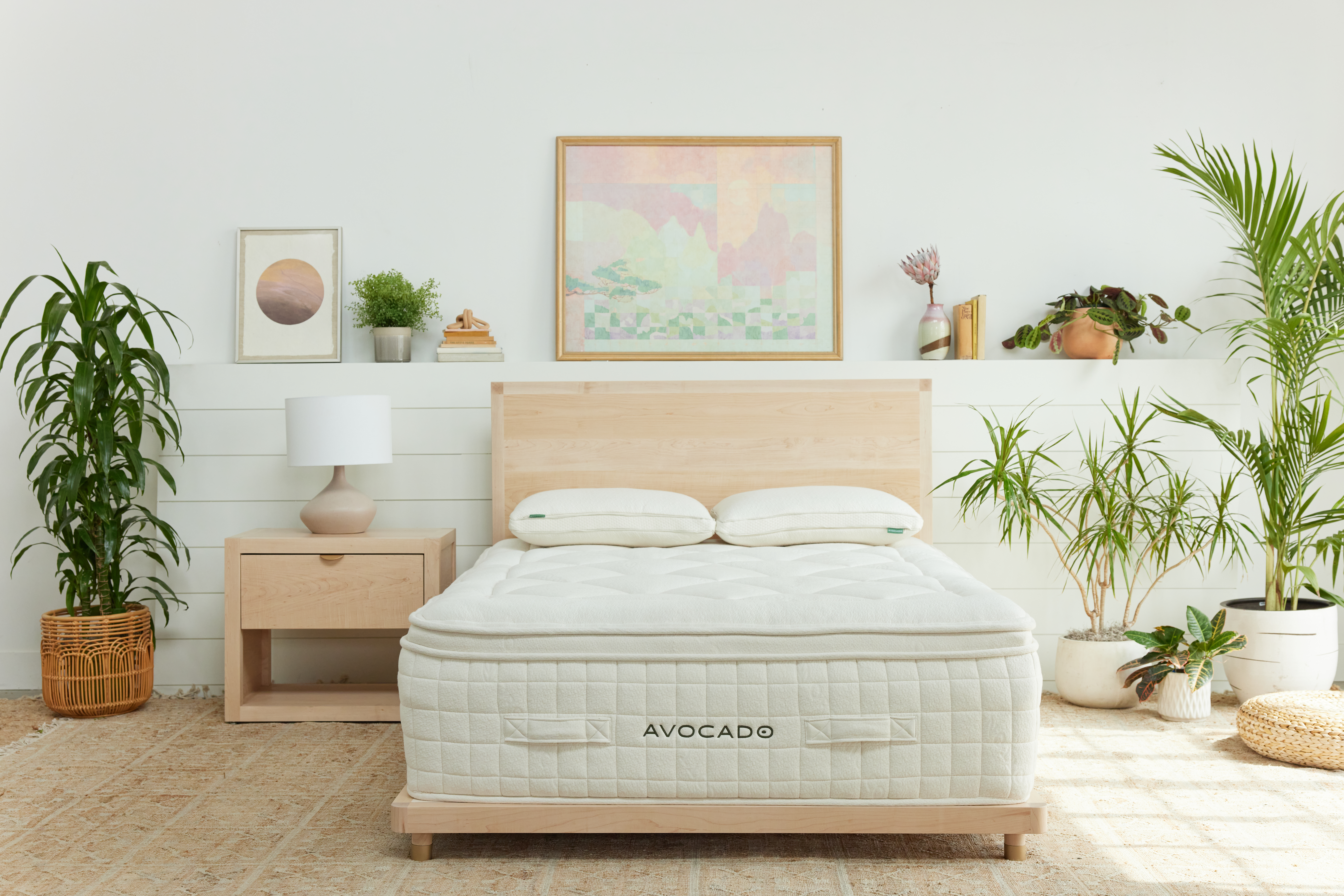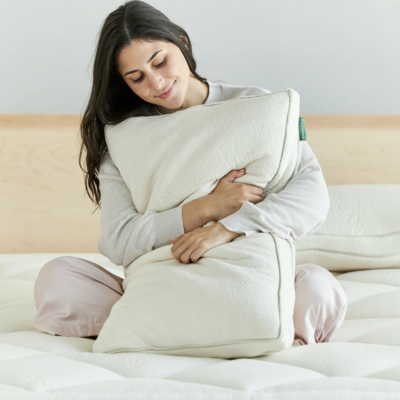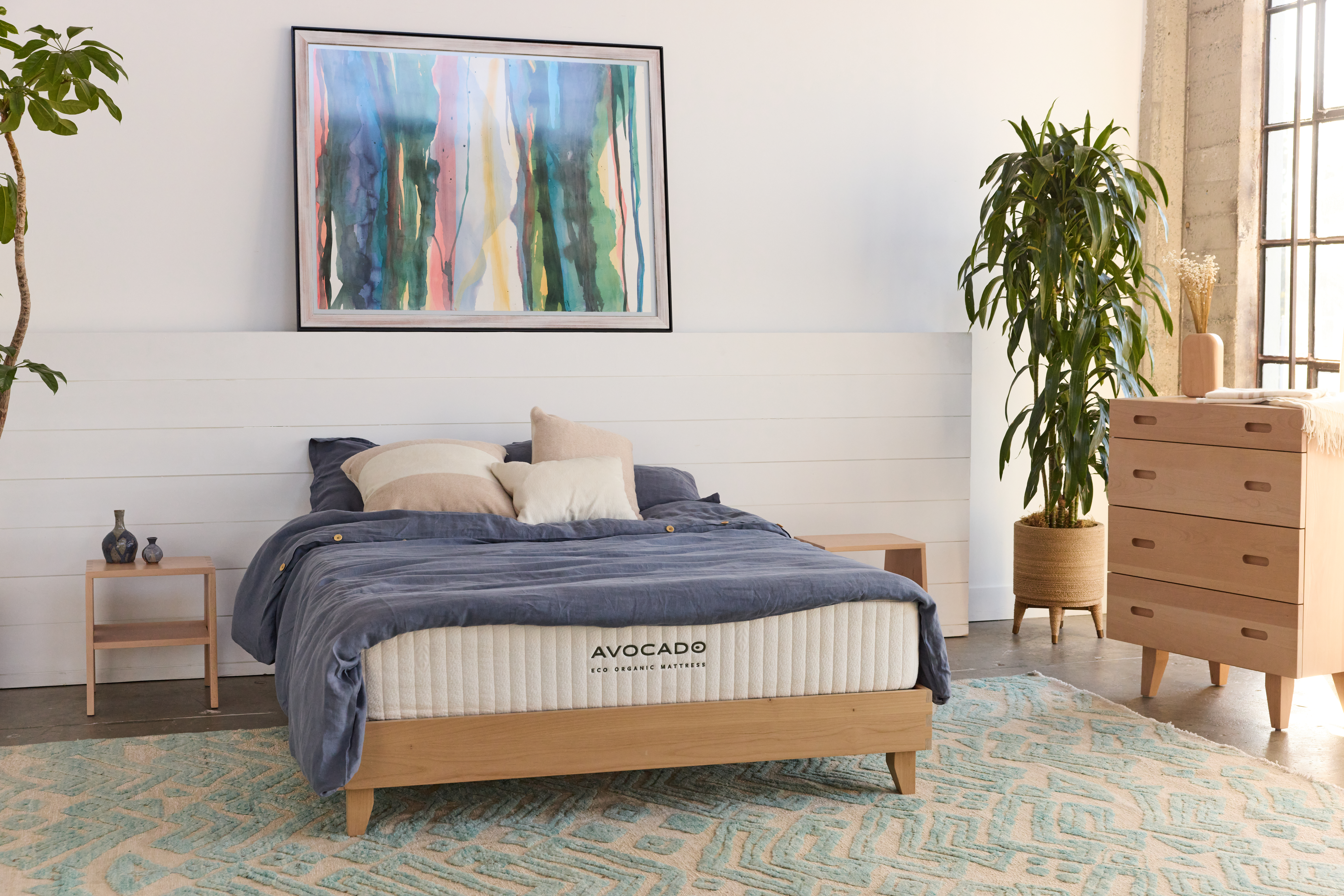Adjusting to your new mattress might take time. Here’s what to expect during the break-in period and how to troubleshoot the transition.
After weeks (or maybe even months) of researching and comparing mattresses, you finally did it—you bought a new one. You couldn’t wait to sink in and get the best sleep of your life. But after that first night…something felt off. The dreamy, hotel-like comfort you imagined—or the cozy, familiar feel of your old mattress—just wasn’t there. And now you’re wondering, “Did I make the wrong choice?”
Switching from a worn-in mattress to a brand-new one can feel strange at first. Even if your old mattress wasn’t doing your back any favors, it was what your body was used to. So adjusting to a new one, even a better one, takes time. And that can feel discouraging when you’ve just made such a big investment for your sleep.
But don’t rush to initiate the return process just yet. Pause, and take a breath.
An adjustment period is normal and expected. Your body may just need to adapt to a different type of support. That deep, restful sleep you’ve been yearning for is still possible with a some patience and potentially a few simple changes to your bed setup.

Read more: Pure Talalay: Our Secret To A Better Night’s Sleep
How long does it take to break in a new mattress?
When your mattress arrives, especially if it’s rolled and packed in a box, it needs some time to settle. Give it a few hours to expand and air out before your first use. Then, as you sleep on it regularly, the materials will soften and contour to your body.
On average, it takes about 30 days to break in a mattress, but that can vary depending on the type. Because of its dense structure, memory foam can take up to 60 days to fully adjust to your body. Traditional spring mattresses typically need about a month to settle, while latex mattresses—like the organic Avocado Green Mattress—tend to have the shortest adjustment period, usually within just a few weeks.
How often you use your mattress can also affect the timeline. If it’s only used occasionally, it’ll take longer to break in. Sleeping on it every night in your preferred sleep position helps apply consistent pressure so the materials can break in evenly. You can also speed things up by spending extra time napping, reading, or even just lounging in bed.
Read More: The mattress certifications you need to know
Simple changes to make your mattress more comfortable
It’s natural to start overanalyzing any discomfort during the adjustment period. Are the aches caused by the mattress, or is it not a sleep-related pain? Should you get a mattress topper? Should you return the mattress?
I’ve been there. When I bought my first “grown-up” mattress, I thought that was it—I’d solved all my sleep problems. But pretty quickly, I realized a mattress is just one part of the sleep system. Sure, it has the biggest impact on how your body feels in the morning, but it doesn’t work alone.
The frame or foundation underneath, the topper (or lack of one), your pillow, sheets, and blankets—they all affect how the mattress feels and performs. So if things aren’t feeling quite right, especially as more time passes, it might not be the mattress. Sometimes, a small tweak to your overall sleep setup can make all the difference.
Check the feel
Does your mattress feel firmer than expected? A fitted sheet or mattress protector that’s too tight can compress the surface and create extra tension, making it feel stiffer and less responsive to your body. Make sure to use sheets with deep pockets to accommodate the full height of the mattress. If you want more softness, try a quilted mattress protector for a gentler cushion.
Check the foundation
If your mattress feels like it’s sagging or bouncing more than it should, your bed frame might be the problem. A solid, non-yielding base will help your mattress sit how it’s meant to. If you’re using a slatted frame, make sure the slats are sturdy, don’t flex, and are no more than three inches apart. For king-size beds, a center beam is a must. And when in doubt, check the manufacturer’s guidelines. Some mattresses require more structure than others.

Read more: How to Combat Sleep Anxiety
Check the temp
Even with a breathable mattress made from natural, thermoregulating materials, your setup could still trap heat. Synthetic sheets, waterproof pads, heavy duvets, and warm pajamas can all work against the airflow your mattress is designed to provide. Swap in lightweight natural materials like organic cotton or linen to help you sleep cooler.
Check your pillow
Still waking up with a sore neck or back? It might be your pillow, not your mattress. Pillows provide around 30% of your overall sleep support—so if yours is too flat or two firm, your spine won’t be aligned properly no matter how supportive the mattress is. Try a new pillow for better support and more comfortable sleep.
Check for first signs of indentations
It’s normal for your mattress to show light impressions as the materials naturally compress. To help maintain its shape, rotate your mattress 180 degrees once a month during the first few months. After that, rotate it every few months to ensure even distribution across the surface.
Read More: Signs it’s time to replace your mattress
What to consider before returning a mattress
No one wants the hassle of returning a mattress—it’s big and bulky. But sometimes it’s necessary. Before you start a return, consider a few things:
- Have I given it enough time?
- Have I made adjustments to my sleep system?
- Is the discomfort persistent despite my efforts to troubleshoot?
With Avocado, you have the flexibility of a one-year, 100-day, or 30-night sleep trial (depending on the mattress) to ensure you get a safe, supportive, and luxurious night of sleep.

Read more: Bedtime Mocktail Series: Cherry Lavender Twilight Tonic
Have feedback on our story? Email [email protected] to let us know what you think!

Shop Pillows
The Essential Organic Pillow Collection
Gentle, breathable, non-toxic support.







